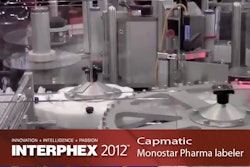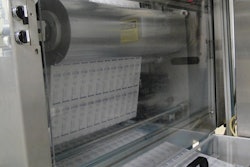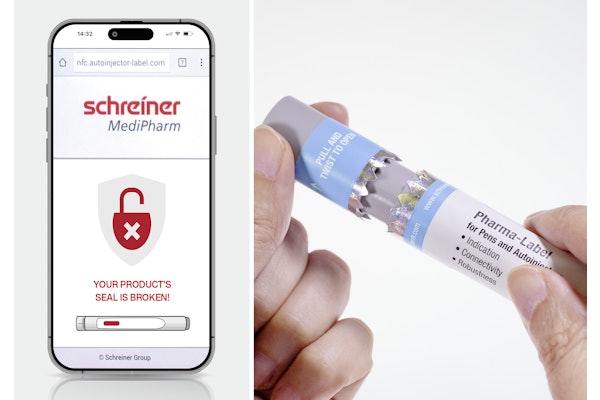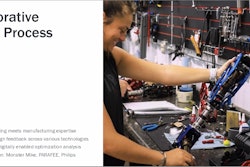
In at least two important ways, the U.S. Food and Drug Administration has recently been expanding its horizons, emphasizing international perspectives to get a better handle on the safety of imports, and looking more and more at drug safety after, not just before, the products are cleared for marketing.
It's tough enough to develop a regulatory scheme that balances the need for protecting the public with fairness and efficiency to industry. It's even tougher when you also try to harmonize with international standards and those of other countries. That is the daunting balancing act FDA increasingly faces when trying to figure out how best to regulate imported drugs, medical devices, foods, and other products.
In April, FDA announced a new "Global Engagement Report" that tried to summarize the many steps it's taking to achieve such harmony.
The agency says the past decade has seen a big upswing in foreign manufacturing of products sold here and their components, as "FDA-regulated products originate from more than 150 countries, 130,000 importers, and 300,000 foreign facilities." Drug product imports have increased at about 13%, device imports more than 10%, in just the six years from 2005 to 2011. Of the active pharmaceutical ingredients that are used to make drugs, more than 80% are imported, says FDA. It is therefore more crucial than ever that FDA have oversight over foreign companies and their facilities, and understand the way other governments operate.
The report details that more and more clinical trials (that is, experiments on people), are conducted in other countries, saying, "FDA inspects clinical trial sites to ensure that participants are protected and the trial is designed and executed to yield accurate, relevant data on the product." When medical products are imported, the possibility exists for what the agency politely refers to as "economically motivated actions that can pose a significant risk to consumers," including quality problems referred to as economic adulteration and "substandard/counterfeit/falsified products." The latter problem has been a scourge for a number of years and has itself inspired a variety of FDA actions and recommendations, many of them related specifically to packaging and labeling technologies.
FDA takes a multifaceted approach to confronting these problems, by maintaining international offices and posts, working together with other countries on training, information exchange and other efforts, trying to harmonize regulatory standards, using risk analyses to set inspection and monitoring priorities, and other strategies. As imports continue to increase, and internationalization of business does too, you can expect all these FDA activities to expand.
Once products are on the market, FDA has another set of tools to assure their safety. With respect to drugs in particular, recent years have seen a strengthening of emphasis on checking for the safety of drugs after they are approved. Historically, the evaluation of a drug's safety focused on evaluation before the drug was approved for marketing, via laboratory and then clinical trials that were subjected to careful review and statistical analysis and other evaluations. However, new and different safety questions not identified during clinical trials sometimes emerge once drug products are on the market, now being ingested by millions whereas only a few thousand took the product during clinical trials.
In recognition of that risk, and in an attempt to get a better handle on recognizing patterns and taking corrective action more quickly, Congress passed the FDA Amendments Act of 2007 to give FDA additional legal power to require drugmakers to monitor safety after the start of marketing. As well, FDA has started a new division within its Office of Biostatistics "that focuses exclusively on post-market drug safety." In an April report entitled "Advances in FDA's Safety Program for Marketed Drugs," the agency summarized its various activities targeting post-market drug safety. The agency reported that since 2008 it has "required 65 safety-related labeling changes, in addition to the labeling changes done voluntarily by drug manufacturers," and that it issued "68 drug safety communications" in 2011, "up from 39 in 2010."
It's tough enough to develop a regulatory scheme that balances the need for protecting the public with fairness and efficiency to industry. It's even tougher when you also try to harmonize with international standards and those of other countries. That is the daunting balancing act FDA increasingly faces when trying to figure out how best to regulate imported drugs, medical devices, foods, and other products.
In April, FDA announced a new "Global Engagement Report" that tried to summarize the many steps it's taking to achieve such harmony.
The agency says the past decade has seen a big upswing in foreign manufacturing of products sold here and their components, as "FDA-regulated products originate from more than 150 countries, 130,000 importers, and 300,000 foreign facilities." Drug product imports have increased at about 13%, device imports more than 10%, in just the six years from 2005 to 2011. Of the active pharmaceutical ingredients that are used to make drugs, more than 80% are imported, says FDA. It is therefore more crucial than ever that FDA have oversight over foreign companies and their facilities, and understand the way other governments operate.
The report details that more and more clinical trials (that is, experiments on people), are conducted in other countries, saying, "FDA inspects clinical trial sites to ensure that participants are protected and the trial is designed and executed to yield accurate, relevant data on the product." When medical products are imported, the possibility exists for what the agency politely refers to as "economically motivated actions that can pose a significant risk to consumers," including quality problems referred to as economic adulteration and "substandard/counterfeit/falsified products." The latter problem has been a scourge for a number of years and has itself inspired a variety of FDA actions and recommendations, many of them related specifically to packaging and labeling technologies.
FDA takes a multifaceted approach to confronting these problems, by maintaining international offices and posts, working together with other countries on training, information exchange and other efforts, trying to harmonize regulatory standards, using risk analyses to set inspection and monitoring priorities, and other strategies. As imports continue to increase, and internationalization of business does too, you can expect all these FDA activities to expand.
Once products are on the market, FDA has another set of tools to assure their safety. With respect to drugs in particular, recent years have seen a strengthening of emphasis on checking for the safety of drugs after they are approved. Historically, the evaluation of a drug's safety focused on evaluation before the drug was approved for marketing, via laboratory and then clinical trials that were subjected to careful review and statistical analysis and other evaluations. However, new and different safety questions not identified during clinical trials sometimes emerge once drug products are on the market, now being ingested by millions whereas only a few thousand took the product during clinical trials.
In recognition of that risk, and in an attempt to get a better handle on recognizing patterns and taking corrective action more quickly, Congress passed the FDA Amendments Act of 2007 to give FDA additional legal power to require drugmakers to monitor safety after the start of marketing. As well, FDA has started a new division within its Office of Biostatistics "that focuses exclusively on post-market drug safety." In an April report entitled "Advances in FDA's Safety Program for Marketed Drugs," the agency summarized its various activities targeting post-market drug safety. The agency reported that since 2008 it has "required 65 safety-related labeling changes, in addition to the labeling changes done voluntarily by drug manufacturers," and that it issued "68 drug safety communications" in 2011, "up from 39 in 2010."






















